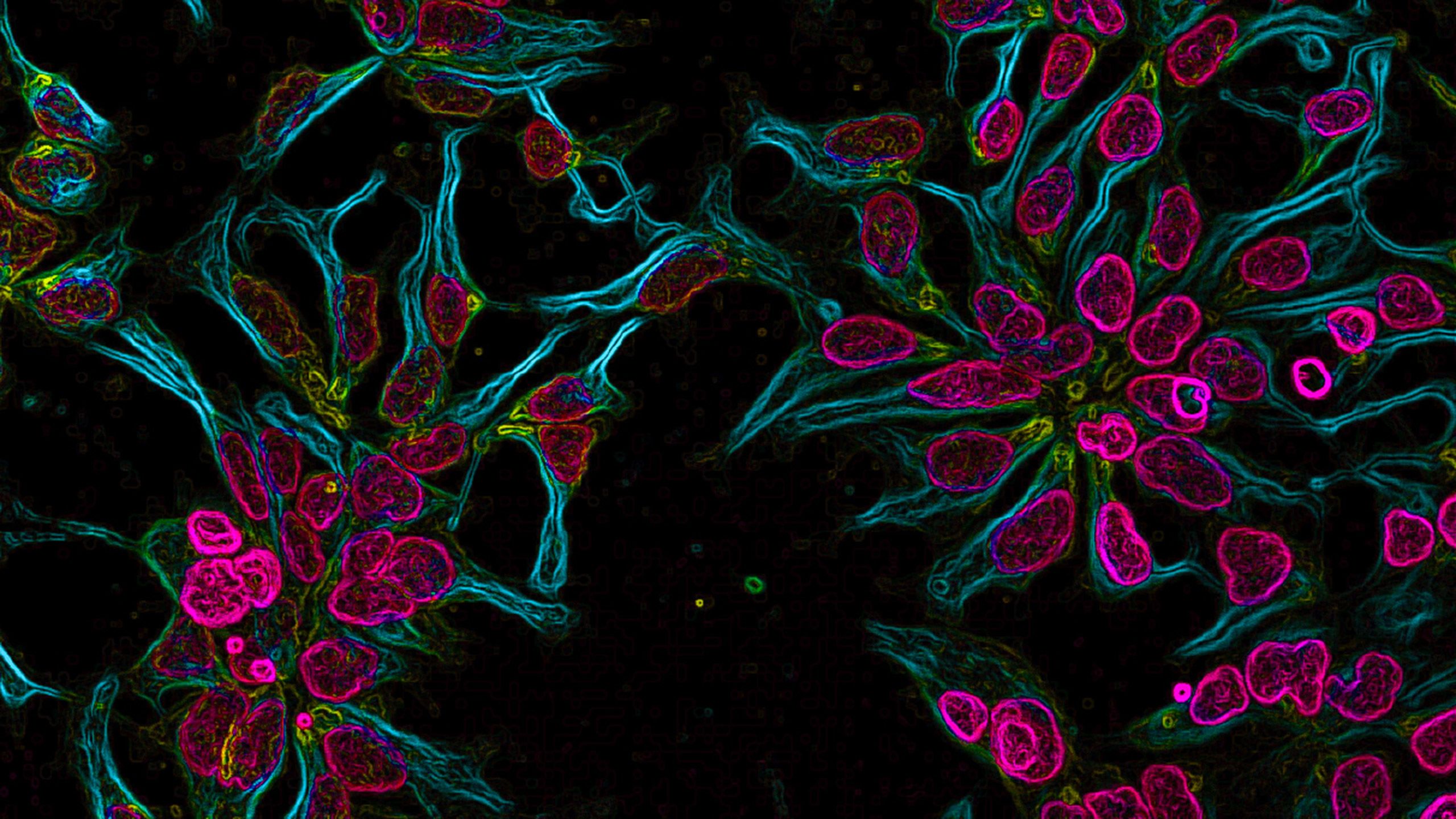Brain-cell bouquet and snaps from Mars — March’s best science images
The month’s sharpest science shots — selected by Nature’s photo team.

Brain-cell bouquet. This image — captured using confocal microscopy — shows embryonic stem cells that are destined to become brain cells. The cells arrange themselves into flower-like rings or ‘neural rosettes’ — with columns protruding outwards. In a developing embryo, these structures ultimately go on to generate the brain and spinal cord. Sumana Shrestha, a PhD student at the Institute of Cancer Research in London, took the image — which was selected as the supporters’ favourite at the ICR’s annual science and medical imaging competition. Rosettes are involved in the development of some brain tumours, and understanding them could pave the way for new brain cancer drugs.

Credit: INPHO/James Crombie
Credit: INPHO/James Crombie
Big bird. Hundreds of starlings flocked together above Lough Ennell in County Westmeath, Ireland, in a stunning murmuration that photographer James Crombie captured on 3 March. The birds are nesting in the reeds around the lake, and take to the sky every four or five days around sunset. It took Crombie hundreds of photographs to capture this “perfect” shot, a moment in which the flock took the shape of a giant bird.

Credit: NASA
Credit: NASA
Rocket stacking. Engineers assemble the twin booster rockets for NASA’s massive Space Launch System (SLS) — the first deep-space rocket since Saturn V, which sent the first astronauts to the Moon. Since November, workers have been using a huge crane to vertically stack segments of the boosters at the Kennedy Space Center in Florida (pictured). The boosters will eventually be attached to the rocket’s 65-metre-long core stage, which is undergoing tests at Stennis Space Center near Bay St Louis in Mississippi. NASA is developing the SLS as part of its Artemis programme, which aims to land the first woman, and the next man, on the Moon by 2024.

Credit: Maxar Technologies/Getty
Credit: Maxar Technologies/Getty
Stuck in the mud. A massive container ship blocked one of the world’s busiest trade routes for almost a week when it became diagonally wedged across the Suez Canal. The 400-metre-long Ever Given became stranded on 23 March amid high winds and a sandstorm that reduced visibility. Efforts to dislodge the 200,000-tonne ship lasted days, and involved several tugboats pushing and pulling the vessel, while dredgers worked to excavate sand from underneath its bow and stern. Hundreds of other ships, including more than 20 oil tankers, were delayed by the blockage. Its effects on global shipping are difficult to estimate, and could take months to resolve.

Ghost town. On 11 March, Japan marked the 10th anniversary of the 2011 Tohoku earthquake and tsunami, which caused the Fukushima-Daiichi nuclear disaster. Here, weeds surround an abandoned van in Futaba, the town closest to the nuclear meltdown site in the Fukushima prefecture. The town’s entire population was evacuated after the disaster, and most of it has remained uninhabitable since. Clean-up efforts are under way, and the Japanese government hopes that some areas will be liveable again by 2022.
Credit: NASA. This video has no sound.
Credit: NASA. This video has no sound.
Martian panorama. NASA has released the first 360-panorama shot taken by the Perseverance Mars rover’s navigation cameras. This GIF shows the order in which the 142 images that were stitched together to make the panorama were taken. Several features of the Martian landscape can be seen, including the rim of Jezero Crater, where Perseverance landed in February. Over the coming months and years, the rover will drive many kilometres, drilling into different types of rock and collecting samples. Future missions are planned to retrieve those specimens and bring them to Earth.

Credit: Alexei Kushnirenko/TASS/Getty
Credit: Alexei Kushnirenko/TASS/Getty
Underwater physics. Scientists have submerged a neutrino detector in the crystal-clear waters of the world’s largest freshwater lake, Russia’s Lake Baikal. The Baikal-Gigaton Volume Detector floats about one kilometre beneath the surface, searching for elusive high-energy neutrinos emitted by distant cosmic events. It is made up of clusters of spherical glass and stainless-steel modules, which hang down like strings of beads and sense the light emitted when neutrinos hit the water. Its 288 modules occupy a space measuring 500 cubic metres, making it the largest telescope in the Northern Hemisphere.

Bat catchers. Ecologists Phillip Alviola and Edison Cosico wait beside a net that they set up near a bat roost at Mount Makiling in Los Banos, in the Laguna province of the Philippines. The work is part a project that aims to help avert potential pandemics by identifying bat coronaviruses. The researchers wear protective hazmat suits, in case any bats they handle already carry diseases that can infect people. They hope to catch thousands of bats over the next three years, taking oral swabs that can be analysed for viral material. “What we’re trying to look into are other strains of coronavirus that have the potential to jump to humans,” says Alviola. “If we know the virus itself and we know where it came from, we know how to isolate that virus geographically.”